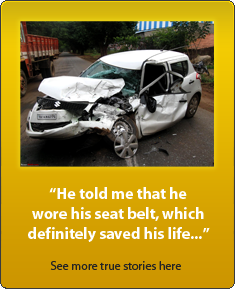News
Building a 1:3 scale model of a V8 engine
It was made by a German company called Franzis and they do quite an interesting range of various engines.
BHPian Jeroen recently shared this with other enthusiasts.
First of all, I don’t name my engines, (or cars for that matter). But when showing this to my wife, I was explaining that it was a V8. Originally found in the Good Ol’ US of A and many other (muscle) cars. She told me this was Betty. So there we are, meet Betty the formidable V8 Folks!
Those of you interested in scale model (building) are well served here on Team-BHP. We have several outstanding threads where members show their models. From tanks to cars, to plane and boats and anything in between.
I have started building little engines from metal, all home made on my lathe and mini mill. I recently completed a very simple two Stroke Engine, who was named Debbie by her designer. So now we have a Debbie and a Betty in the family it seems.
I have been looking at these model engine kits for many years. I am not sure how easy they are to procure in India. But here in Europe, a well stocked model build shop is likely to have several in stock. The other day, an ad for a 1:3 scale V8 popped up in my Facebook feed.
It was made by a German company called Franzis and they do quite an interesting range of various engines, have a look.
I was interested in the V8 though, going by the ad it featured:
- over 250 parts
- extensive manual
- original V8 sound
- Simulated Spark
- Functional model
- 1:3 scale
Build your own legendary V8 engine and experience what is behind the technology.
I do own a real 4.0L, 400BHP, turbo charged V8. Would be great to see what is inside a typical V8!
So I decided to have a go at it. I ordered it, it arrived about a week ago. Last weekend, I spent about 5-6 hours in total putting it together. Which is saying something on the level of expertise required.
I used to build a lot of airplane models in my teens. I was pretty good at it too. This model does not require any previous model building skills.
This is what the box looked like:

Opening it up:

It has a very extensive manual. 72 pages. Not only does it describe, in detail with excellent drawing how to build the model, it also has a wealth of other information on the V8.

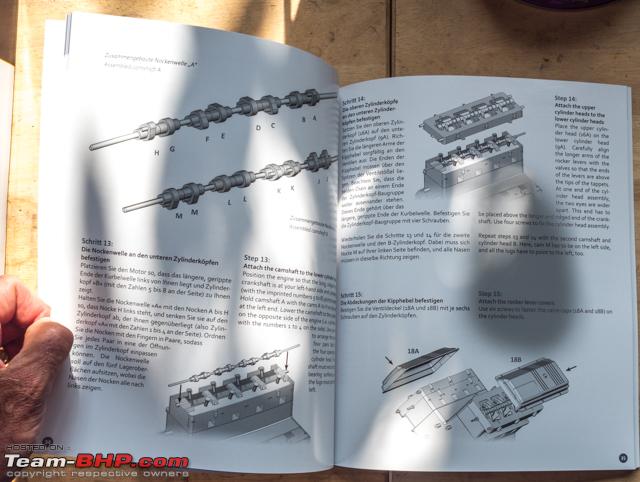
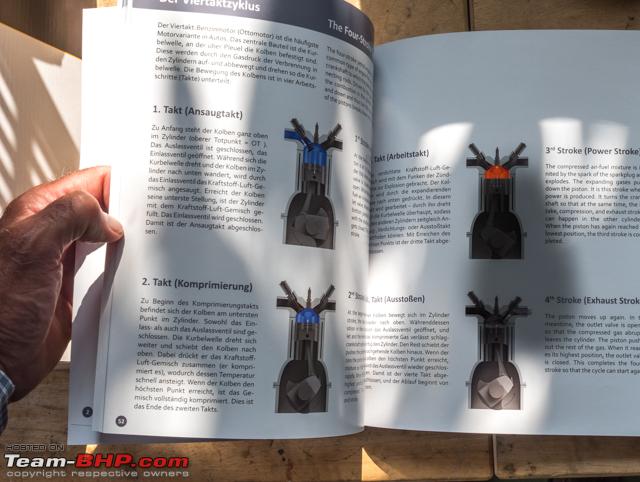
It has stories about the development of the V8, cars that used the V8 (AC Cobra, BMW M3) and lots of colour photographs to go with it.
All unpacked and ready for assembly:

This is what the real McCoy looks like:

This is what my 1:3 V8 with simulated spark and original V8 sound will look like!
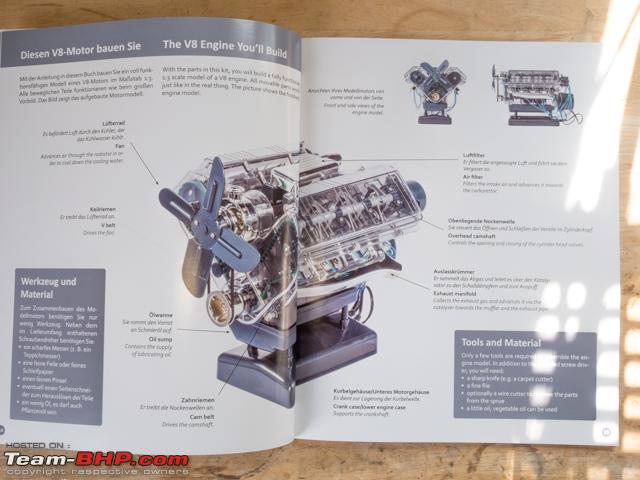
It has some very good material in the manual. Good in the sense that it helps you find parts during the build. But also it provides you with all the appropriate names for all parts! The complete manual is written in German (on the left) and English (on the right). I was happy to see that the manufacturer actually went through the trouble of providing a decent English translation.
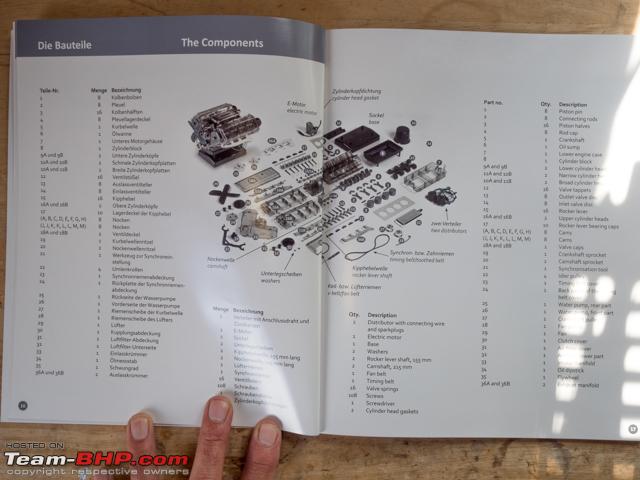
Also shows you the real BMW M3 V8 taken to bits in a similar fashion:

So finding the parts is very straight forward. No glueing is required. Just cut the parts of the frames, remove any excess plastic.
First parts made, 8 pistons with their piston pins and connecting rods:

Next step is fitting them to the crankshaft, one at the time, each with its own bearing cap.

Done!!
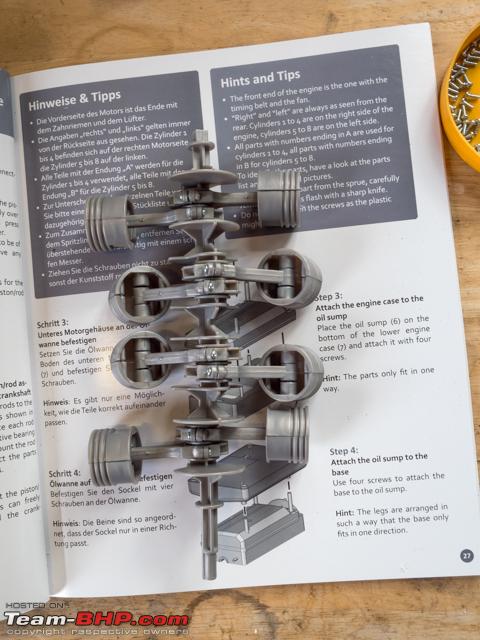

The fit of the various parts is not that great, but it is sufficient for the purpose of this kit. Once assembled, it has a small battery driven e-motor so you can see it turn. So all fittings and clearances are very ample. Just so nothing gets stuck.
Here’s the thing with building a V8. You are going to be handling the same parts a lot. There are 8 pistons, 8 connecting rods, 8 inlet valves, 8 outlet valves, 16 valve springs, 16 rockers etc. etc.
It is one of the reason when it comes to metal model building, I prefer a single cylinder engine. So much easier. If you want to see somebody building a real working metal V8 have a look here on my Dutch Modelbuild forum. All in Dutch, just look at the images. The difference between this kind of model building and this kit is huge, of course!
We continue the build by attaching the engine case to the sump. No glue is used on this model. It all clicks together or is held together by tiny screws.

Next, the piston and crankshaft assembly is lowered into the cylinder block:
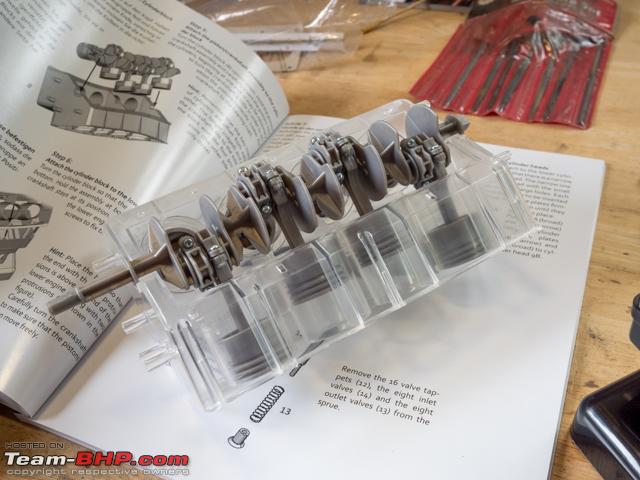
Another way of illustrating the difference between “plastic Betty” and "metal Debbie”.
The piston-cylinder clearance of Betty is several millimeters.

The piston-cylinder clearance of Debbie is less than 0.03mm. Less than the accuracy of my lathe. Took many, many, many, many hours of honing the cylinder wall to get that sort of precision.
Already beginning to look like an engine, our Betty is:

Next, it was time for the valves to be inserted into the cylinder heads:
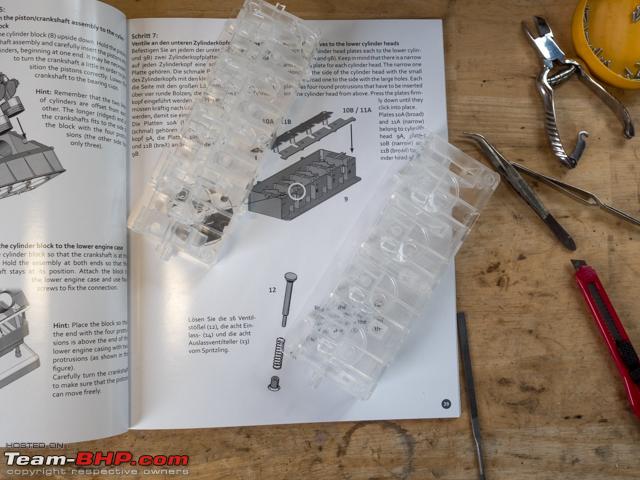
All the valve springs were provided on these little metal rods. Very convenient and handy. The rods themselves will be used later for the camshafts!

A valves assembly consists of the tappet, the spring and the valve. The exhaust valves are noticeably bigger then the inlet valves.
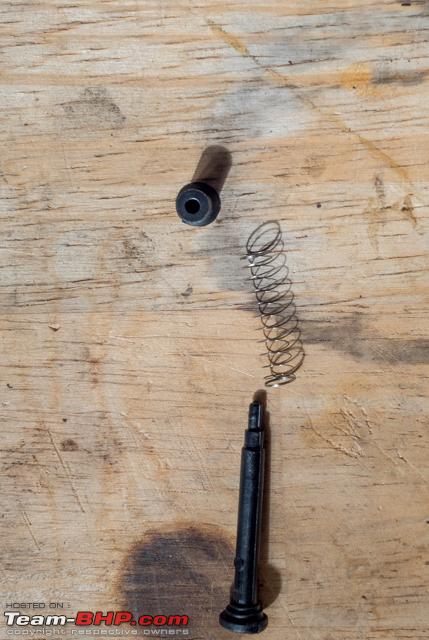
With 8 outlet valves assemblies and 8 inlet valves assemblies ready in parts, you insert them in the respective hole of the cylinder head and use your fingers to squeeze the valve onto the tappet.
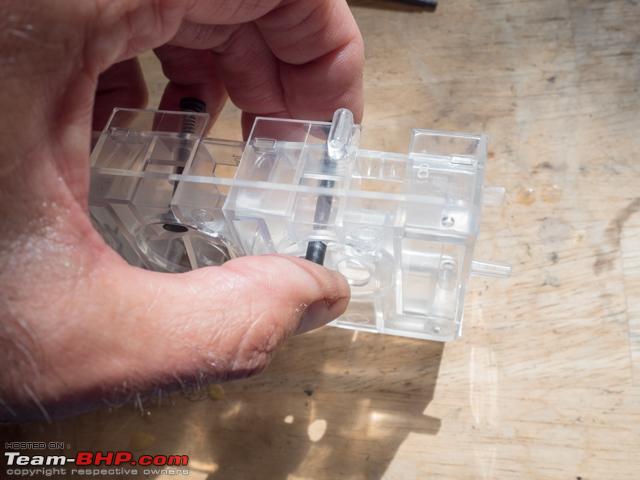
Repeat 15 more times:
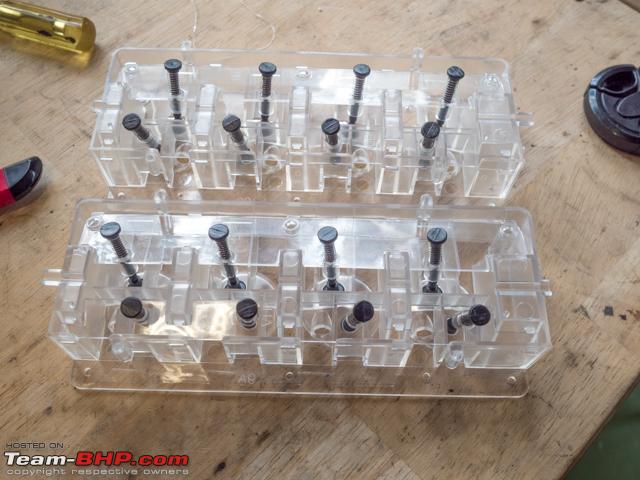
Here you can see what the inlet and outlet valves look like once mounted:

Onto the rocker levers and the rocker shafts:

Each rocker lever assembly fits into its own upper cylinder head. You do need to be careful. Some parts are interchangeable, e.g. pistons. Some parts have left / right orientation and can only be used in one specific location. But all the parts are clearly numbers in the frame and also on the part itself. So when relevant, each part will have an A or B added to it, meaning which side (bank) of the engine it is meant for.
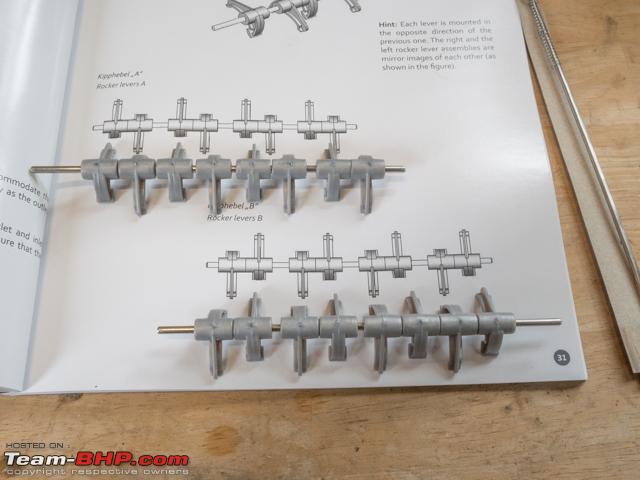

Two cylinder head gaskets are provided. They are not interchangeable either, so make sure you fit the right one to the right cylinder block!!

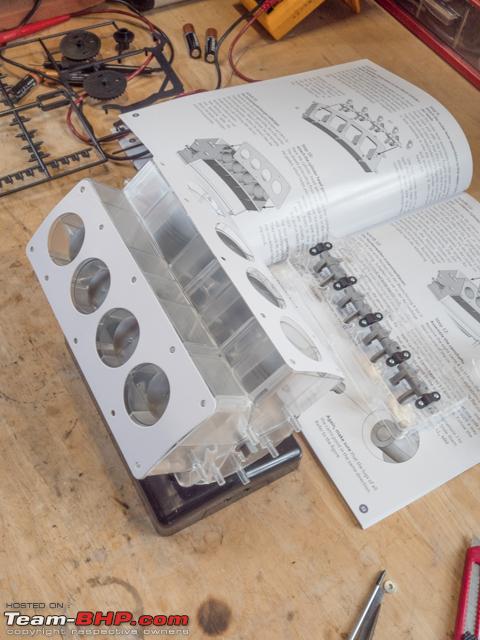
Continue reading more on the build and BHPian comments for more insights and information.
- Tags:
- Indian
- Member Content
- Scale Models
- Build
- V8















